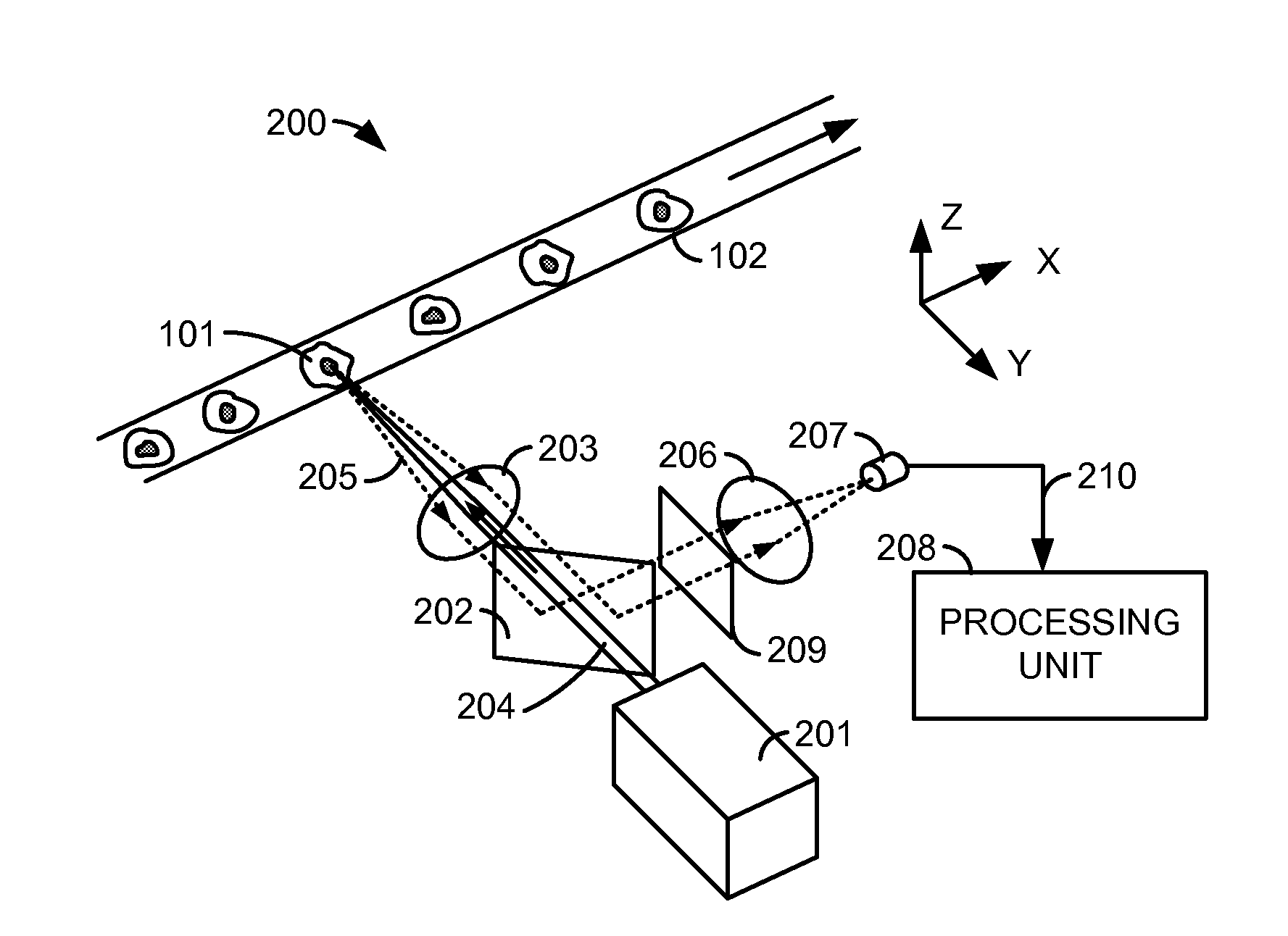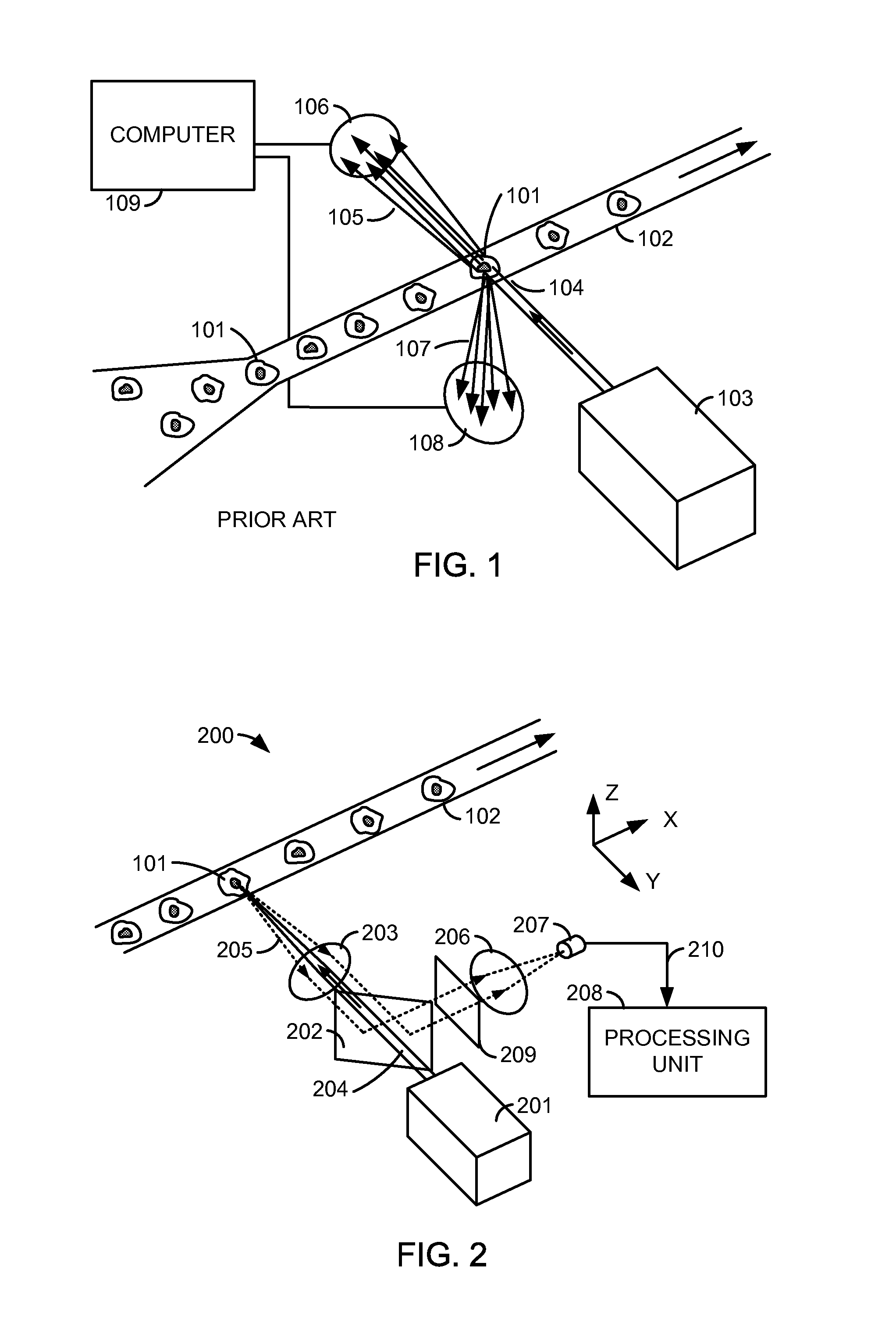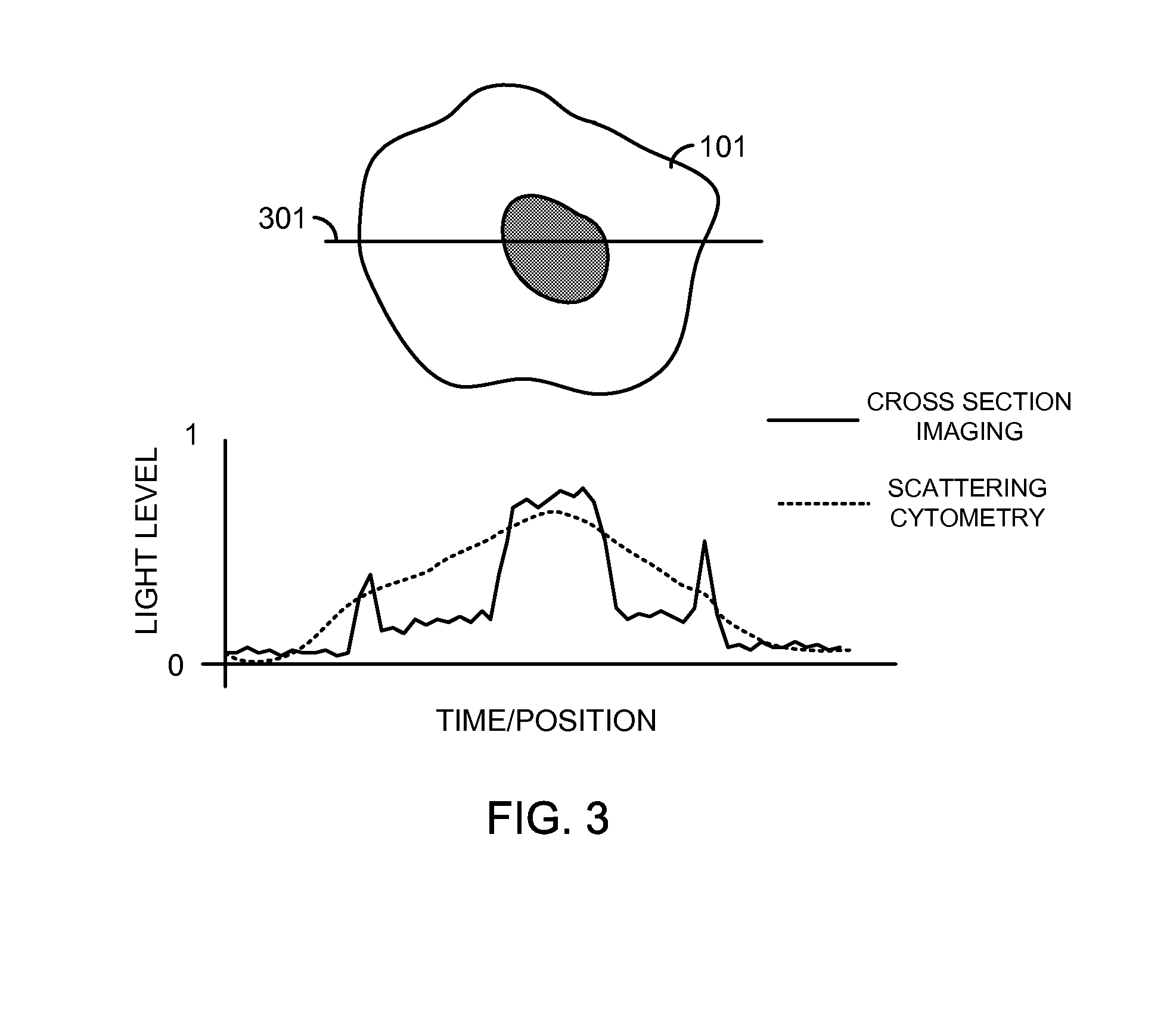High-speed cellular cross sectional imaging
a cross-sectional imaging and high-speed technology, applied in the field of biological cell counting and characterization, can solve the problems of large data storage and analysis requirements, slow image cytometry, etc., and achieve the effect of reducing data analysis and performing much more quickly
- Summary
- Abstract
- Description
- Claims
- Application Information
AI Technical Summary
Benefits of technology
Problems solved by technology
Method used
Image
Examples
Embodiment Construction
[0014]Some applications for cytometry require more information than may be available from techniques based purely on scattered light, but may not require all of the information available from full image cytometry. For example, a researcher may wish to investigate whether specific biological activity occurs at the surface or nucleus of a cell, or in the cell's cytoplasm. Certain molecules may be labeled with fluorescent tags and incorporated into the cells to be studied. Many different tagging compounds, sometimes called fluorophores, are available, including the ALEXA FLUOR™ series of fluorophores available from Life Technologies Corporation of Carlsbad, Calif., USA.
[0015]FIG. 2 shows a simplified conceptual diagram of a high-speed cross sectional cell imaging system 200 in accordance with an embodiment. The system of FIG. 2 is a flow cytometry system, although one of skill in the art will recognize that embodiments of the invention may be utilized in other kinds of cytometry as wel...
PUM
 Login to View More
Login to View More Abstract
Description
Claims
Application Information
 Login to View More
Login to View More - R&D
- Intellectual Property
- Life Sciences
- Materials
- Tech Scout
- Unparalleled Data Quality
- Higher Quality Content
- 60% Fewer Hallucinations
Browse by: Latest US Patents, China's latest patents, Technical Efficacy Thesaurus, Application Domain, Technology Topic, Popular Technical Reports.
© 2025 PatSnap. All rights reserved.Legal|Privacy policy|Modern Slavery Act Transparency Statement|Sitemap|About US| Contact US: help@patsnap.com



